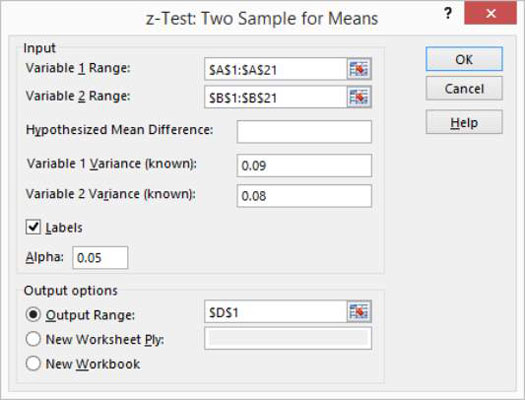
- #VARIANCE FORMULA IN EXCEL FOR MAC HOW TO#
- #VARIANCE FORMULA IN EXCEL FOR MAC INSTALL#
= (STDEV(Data Range) / AVERAGE(Data Range))*100 To calculate the %RSD in Microsoft Excel a short formula must be used:

%RSD is a powerful tool to statistically inspect the variation in sets of data but a specific function is not available in Excel 2003, 2007 or even 2010.

Percentage relative standard deviation is a widely used statistical tool but strangely there is no automated function in any version of Microsoft Excel.
This guide will detail how to calculated the relative standard deviation (%RSD) using Excel, then walk through a worked example and finally detail the limitations of the calculation. From there, you can see what language you're currently using, add a new language, and more.Excel and Relative Standard Deviation %RSD To view or modify your language settings within Excel, go to File > Options > Language.
Function Names Changed in Non-English Versions of ExcelĪdjusting regional settings To view and modify language settings:. Easily Insert an English Formula in Your Non-English Excel Version (Note that this will require you to install a third-party plug-in for Excel.). Check out some of the resources below to learn more about language-specific function names: For example, the SUM function is written as SOMME in French, SUMME in German, and SUMA in Spanish. However, the exact name of any function will depend on your computer's language settings. For example, would be written like this:īut in most countries, it will typically be written as day/month/year, like this:Įxcel has hundreds of functions to perform different types of calculations. You'll typically need to use the standard formatting in your country when entering values like this in Excel. In other countries, it's often written like this: In the U.S., this is typically written with a comma, like this: There is a similar type of variation with numbers that use the thousandths place. For example, in the United States, decimal numbers are written with a period, as in the example below:īut in many countries, decimal numbers are written with a comma, like this: There are many ways to write out various numbers and dates, and their format will vary depending on your region. =VLOOKUP("Photo frame" A2:B16 2 FALSE) Writing numbers and dates =VLOOKUP("Photo frame", A2:B16, 2, FALSE)īut in many countries, arguments must instead be separated by a semicolon, like this: English version-arguments in a formula are separated by a comma, as in the example below: In many versions of Excel-including the U.S. Let's take a look at some of the most important things that can vary if you're using Excel in another language or version. English version of Excel in our Microsoft Office tutorials, so you may notice that some things work slightly differently in your version. However, there are also many regional differences when it comes to certain tasks in Excel, including separating arguments, writing numbers, and function names.įor example, we use the U.S. And because Excel is popular around the world, it's available in many different languages and versions. Millions of people use Microsoft Excel to organize and calculate data. en/excel-tips/free-resources-for-learning-office-for-mac/content/ Understanding regional differences in Excel 
Lesson 28: Understanding Regional Differences in Excel







 0 kommentar(er)
0 kommentar(er)
